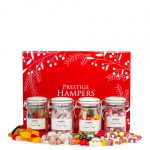When it comes to serving cheese, you may have received the sound advice of including a variety to please all of your guests. This means that you should include at least one or two varieties of each type of cheese. Understanding the classifications of cheese will help make it that much easier to choose and cater to everyone’s preferences.
Fresh
Fresh cheese is curdled using lactic acid fermentation. This type of cheese-making does not require the use of rennet. Some examples include ricotta, mascarpone, cream cheese and cottage cheese. They are excellent for desserts and for use in various dishes.
Soft
This variety, as the name suggests, has a softer texture with a 50% – 60% moisture content. They usually have a soft rind and they are enjoyed with bread. They are not commonly added to dishes or cooked because they lose a lot of their flavour when heated. Examples include Brie and Camembert.
Hard and semi-hard
Usually pale yellow in colour, hard cheese is cooked and pressed. The curd is heated and the cheese is pressed into the desired form to create the compact final product. Examples include Parmesan, Cheddar, Gouda and Monterey Jack.
Blue-veined
Blue cheese is an acquired taste, some might say, because it has a very strong flavour and smell. The blue-green veins are, in fact, mould which is injected into the cheese. Examples include Stilton, Gorgonzola, Bleu and Roquefort. These cheeses should always be served separate from any other types because their strong aroma can affect the flavour of other foods.
Processed
In some cases, cheeses are made through a process of remelting and the addition of milk, butter or cream. They keep for a very long time and they contain many more additives. This is why so many people prefer to avoid these types of cheese or, at least, enjoy them in moderation. Examples include cheese spreads and sliced cheese.
If you plan on serving a cheese plate, make sure that you include one or two of each of these types of cheese for your guests. You should also label each type of cheese so that your guests can choose their favourites without guessing.


Be the first to post a comment.